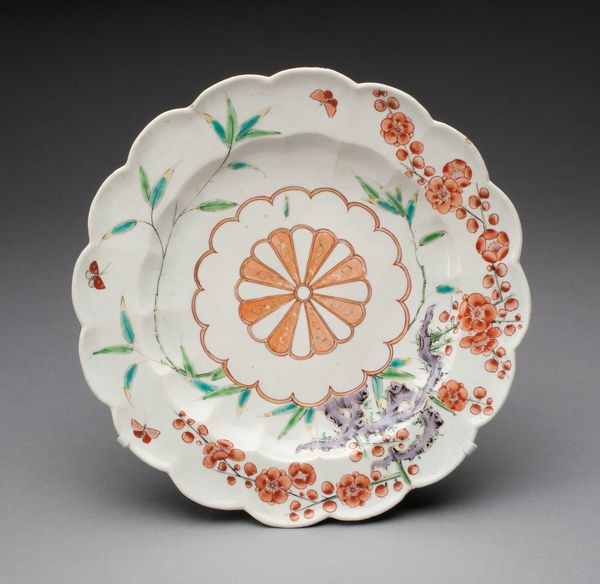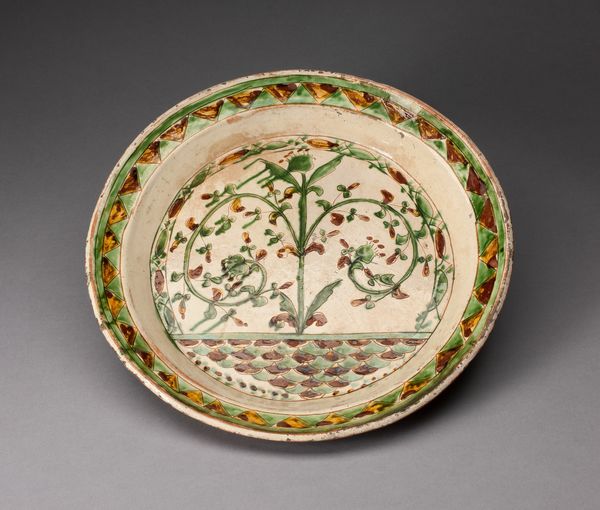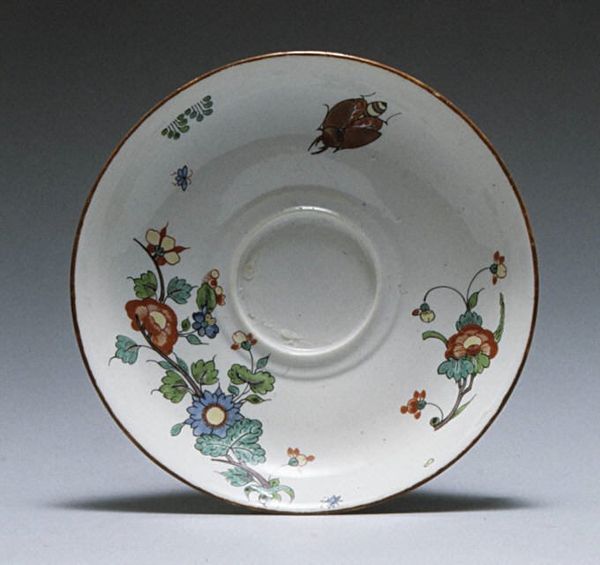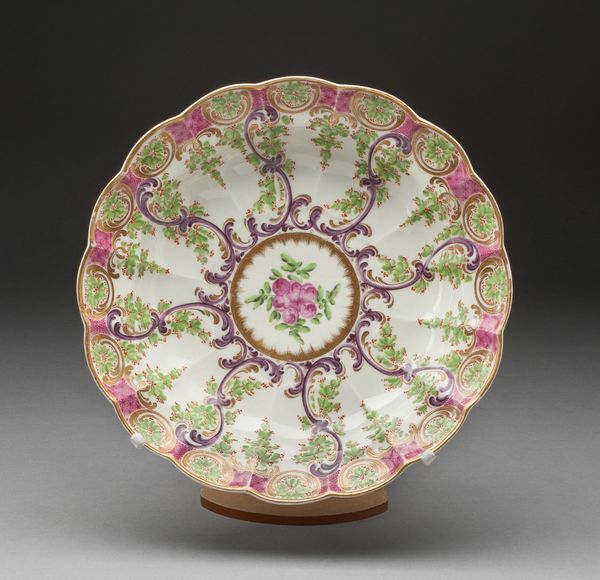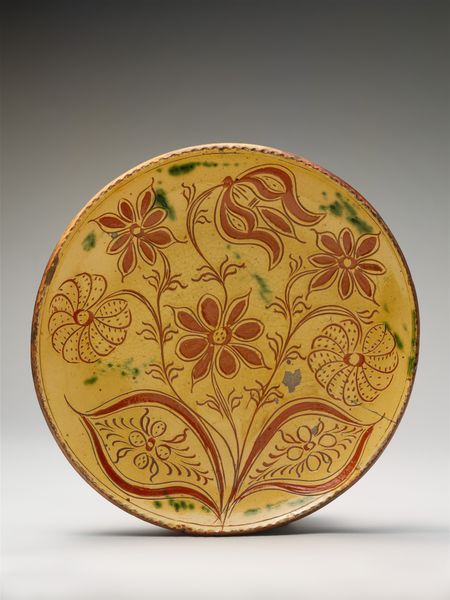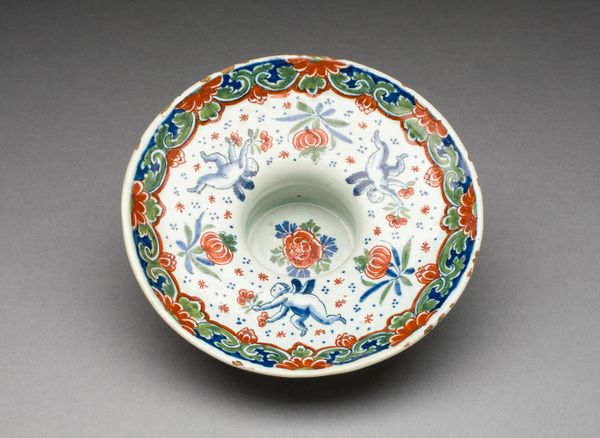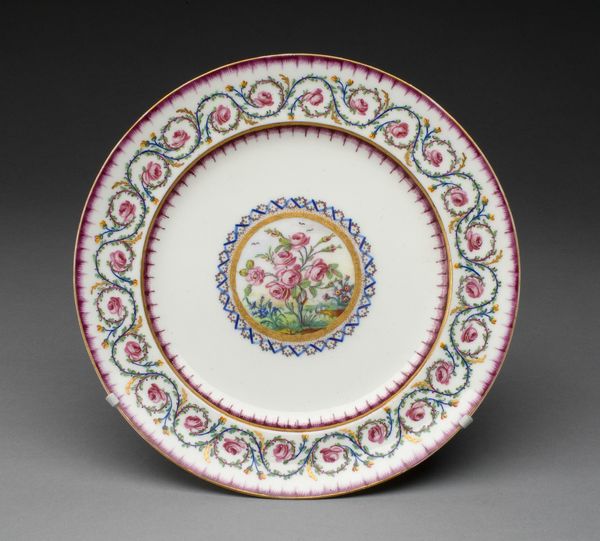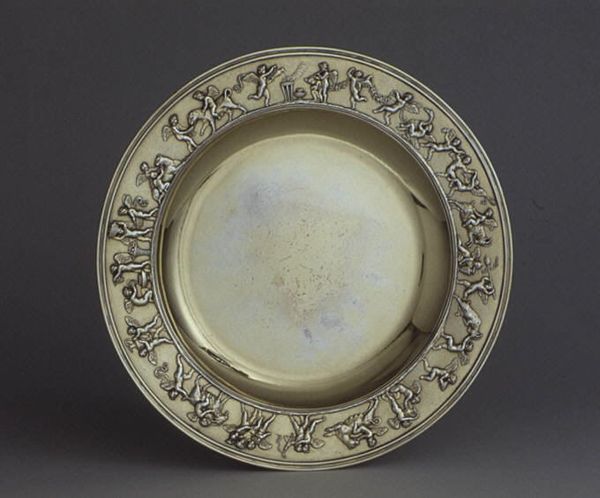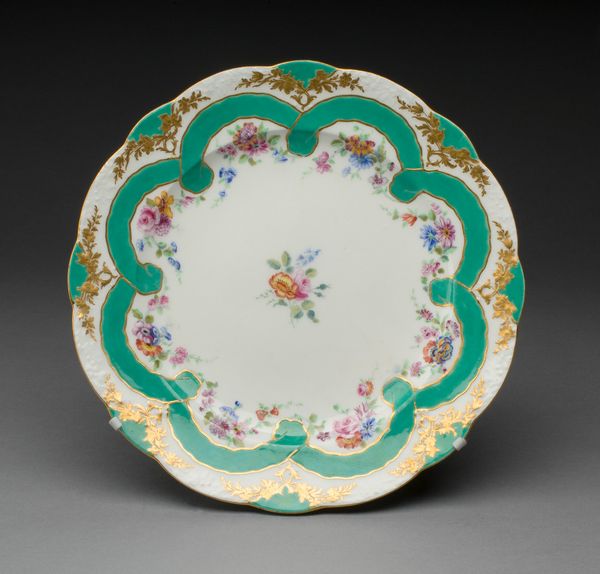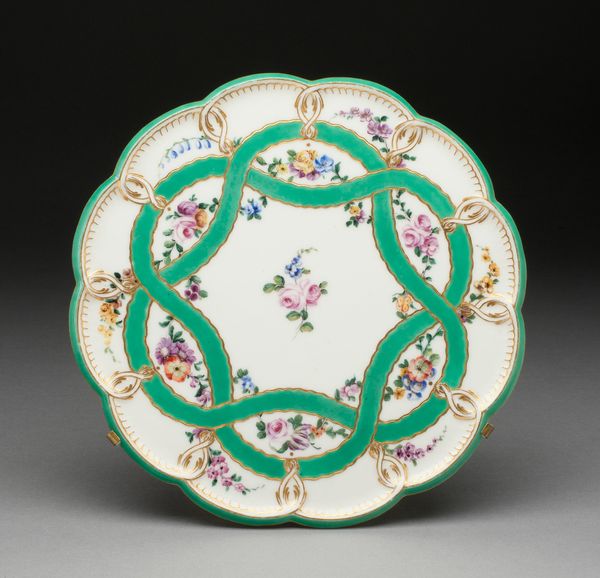
ceramic, porcelain
#
ceramic
#
porcelain
#
ceramic
#
decorative-art
Dimensions: Diameter: 5 in. (12.7 cm)
Copyright: Public Domain
Editor: Here we have a delicate porcelain saucer from Vienna, dated between 1720 and 1740. It's giving me a real sense of old-world charm, the floral patterns are so gentle and precisely placed. What do you see in this piece? Curator: It’s fascinating how this “simple” saucer becomes a canvas for understanding the power dynamics of its time. Porcelain, often dubbed "white gold," held immense social significance. The production of porcelain in Vienna, and its subsequent consumption, reflect the economic and political ambitions of the Austrian Empire. Who had access to these items, and what did that signify? Editor: So it’s about more than just having something pretty to serve tea on? Curator: Precisely. Think about the resources, the labour involved, and the cultural exchange—or perhaps appropriation—that facilitated its creation. The floral designs, likely influenced by Asian ceramics, speak volumes about the global trade routes and colonial power structures shaping European aesthetics. Does this change your initial impression? Editor: It definitely adds a new layer. I was just thinking about how pretty it was, not about the economic and social implications! It makes you wonder, too, who actually made these. Curator: Exactly. Were they celebrated artists or anonymous laborers whose stories are lost to history? Investigating objects like this opens doors to discussions around class, labour, and the often-unacknowledged contributions of marginalized communities. Editor: I'll never look at a saucer the same way again. Curator: And that is exactly why objects such as these have a place in a museum. We see this piece and the opportunity for historical dialogue blossom.
Comments
No comments
Be the first to comment and join the conversation on the ultimate creative platform.
